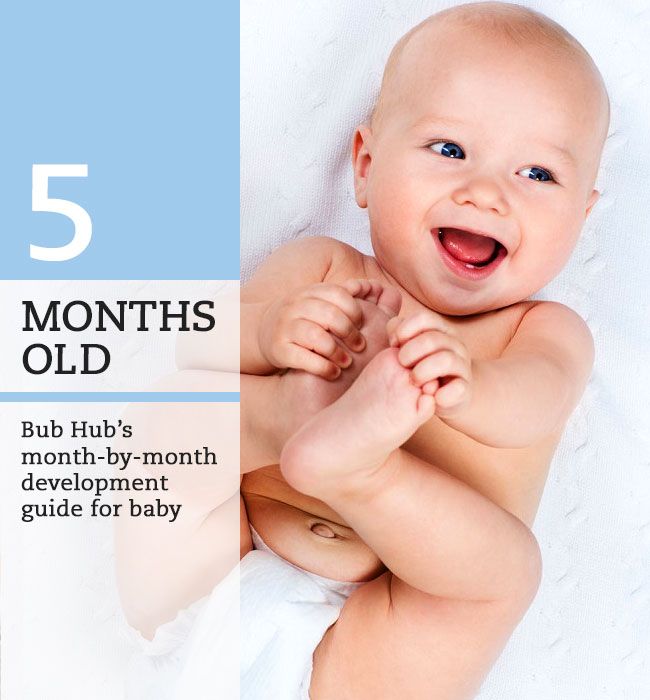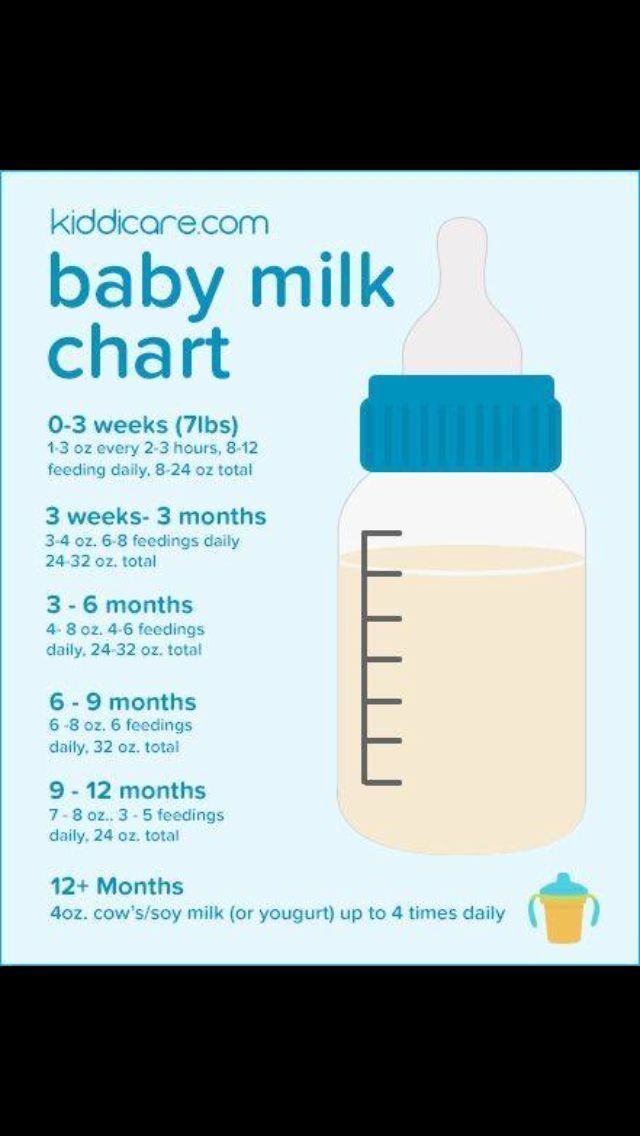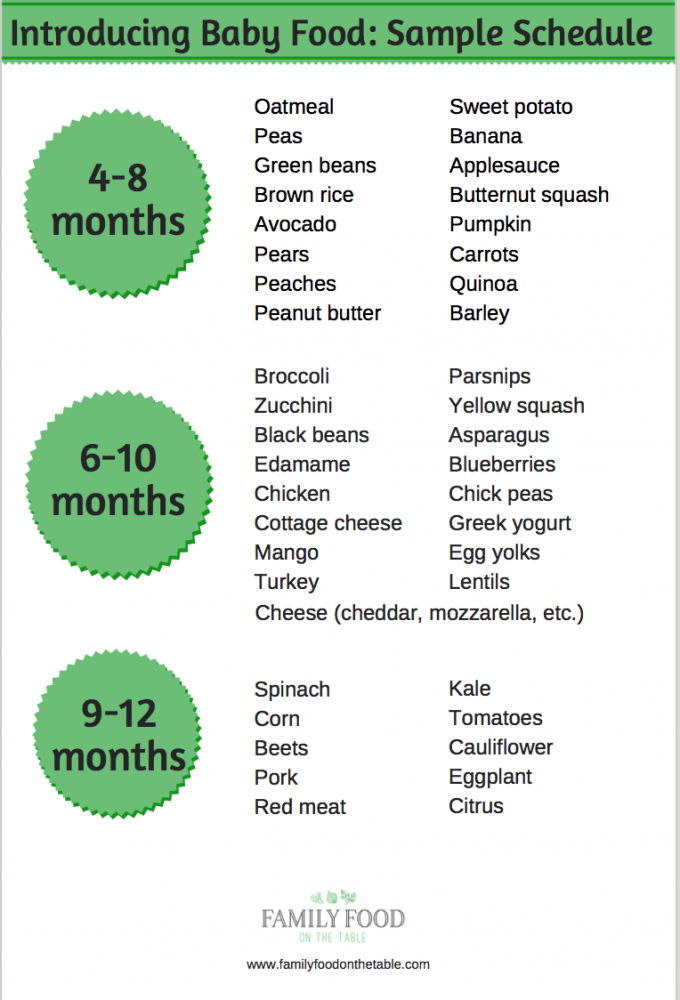2 month old baby reduced feed
Loss of appetite in babies
Feeding your baby is such a huge part of parenting — you give them a bottle to stop their crying, nurse them when they’re sick, and have a great time exploring different foods when they get big enough. It’s up there on the list of life’s great pleasures and it can be an incredible bonding opportunity. So when your baby loses their appetite, it’s distressing, no matter what stage of life they’re at. Here’s how to navigate loss of appetite in your baby.
What to do if your newborn baby or infant isn’t eating
There are a few reasons that a newborn baby may not be eating enough — a tongue tie, illness, or being born prematurely. But regardless of the reason, if your newborn isn’t feeding normally, you should call their healthcare provider, especially if your baby’s sleepy and has a loss of appetite.
This can be a sign of illness, infection, or low blood sugar. Infants dehydrate easily and not eating can quickly turn into a medical issue. Generally, they shouldn’t go without feeding for longer than five hours for their first 12 weeks.
How to increase a newborn or infant’s appetite
Newborns have tiny stomachs. They can only take in a little bit of food at each feed and need to eat every two to three hours, or a minimum of eight times a day. For the first few weeks of their life, it might seem like your newborn is constantly at your breast or wanting their bottle. It’s a lot of work but as they grow, their stomachs will too, and the amount of food they take at each feeding increases.
As much as you may want to boost your newborn’s appetite, the only safe way to do it is to wait. There are no vitamins for babies to increase their appetite, for example. And you should never force-feed them or add cereal to their bottle.
An infant’s digestive system isn’t ready for anything other than breastmilk or formula until around four to six months. Introducing it sooner in place of breastmilk or formula can put them at risk for nutritional deficiencies.
What causes loss of appetite in babies?
There’s a lot that can cause loss of appetite in a baby’s first year. Your baby will likely double their birth weight in the first four months. By the time they hit one, they’ll probably have tripled it. You’ve no doubt heard about growth spurts — periods of time where babies grow more rapidly and noticeably than other times.
To facilitate all that growth, they’ve got to drink a lot of milk or take in a lot of formula. But when that growth spurt ends, their appetite often falls off for a little while. We often see this temporary loss of appetite in three to four-month-old babies because they’ve just come off of a growth spurt.
Loss of appetite in your baby at two months might also be because of a lull in growth, but it’s more likely due to a change in the composition of your breastmilk. Until about six weeks, your breast milk contains colostrum, which has a laxative effect on the baby. As the amount of colostrum diminishes, your baby’s food goes through them less rapidly, which can trigger a decrease in appetite — as well as the number of poopy diapers you deal with.
Other causes for loss of appetite in babies include:
- Teething – a baby’s appetite may be affected by this when their teeth start to come in at about six months and the last of their baby teeth, the molars, appear around age two. Unfortunately, teething can affect a baby’s appetite — and a toddler’s too — which can strike pretty much any time within their first two years. Luckily, teething symptoms like loss of appetite, sore gums, irritability, and drooling don’t typically last longer than a few days per tooth.
- Feeling overheated – Overheating can cause your baby to sweat and become cranky, which can make them not want to eat. Try cooling them down with a wet cloth, dressing them in cotton clothing, and staying under shaded locations.
- Certain types of food – Since some foods take longer to digest — like whole grains — they may make your baby not want to eat. If your baby is starting on solid foods, it may also make them want to eat less since digestion takes longer than the milk they’ve had for the last six months.
 Try introducing solid foods in smaller quantities to avoid sudden loss of appetite in your baby.
Try introducing solid foods in smaller quantities to avoid sudden loss of appetite in your baby. - Vaccinations– a loss of appetite after vaccination in babies is also common. This is because babies can get a fever from the vaccination or feel pain around the injected area. However, if your baby isn’t eating for more than 24 hours after being vaccinated, you should speak to a doctor.
- Too many fluids – Giving your baby too many fluids before or with a meal can make them feel full pretty easily. With a tiny stomach full of liquid, your baby may not want to eat. If they’ve recently had breastmilk or formula, there’s no need for excess water and juice.
- Infections – Viral and bacterial infections in babies could also bring on loss of appetite symptoms — anything from the flu to an ear infection. This discomfort can make it hard for your baby to eat. On top of that, certain antibiotics can cause a lack of appetite in babies. It’s important to speak with a doctor if you notice your baby’s symptoms from the infection are getting worse.

- Growth – your baby’s growth cycle can affect their appetite too. Since babies grow the quickest during their first six months, they’ll take in a lot of breastmilk or formula. From there, your baby’s growth cycle slows down between six and 12 months and again from 12 to 19 months. This means they don’t need as much food as they did when they were first born.
Symptoms of loss of appetite in babies
It’s important to monitor if your baby has a sudden loss of appetite since it could mean they’re sick. Symptoms that often accompany a loss of appetite in babies include:
- Drooling – this could be because of your baby’s teething affecting their appetite, a cold, or even allergies.
- Coughing, vomiting, or both – this might occur in a sick baby with no appetite because of a viral illness like a cold or the flu
- Irritability – this can occur whether the cause is teething or an infection
- Not eating their usual favourite foods – this can be caused by an upset stomach, teething, a cold, the flu, and more.

Tips for how to increase my baby’s appetite
There are many things you can do to increase your baby’s appetite — not only to gain weight but to improve your baby’s nutritional intake as well, such as:
- Giving them a variety of textures and flavours like bananas, sweet potatoes, eggs, meat (introduced after six months), and cheese (introduced after eight months).
- Encouraging tummy time, rolling on the floor, and any other physical activity your baby is able to do.
- Offering new food along with foods you know your baby likes — don’t be afraid to try giving the new food more than once either.
- Preparing the same food in different ways. Maybe your baby isn’t a fan of whole bananas but will drink them in a smoothie with other fruit, for example.
- Limiting mealtime to 20 minutes max and making sure there are no distractions, such as a TV or iPad.
Does a baby get more full with baby food or formula?
Formula is filled with a protein that keeps your baby fuller longer. However, introducing baby food — a form of solid food — at six months of age isn’t meant as a way to fill your baby up more than formula. A goal to starting them on solid foods is to introduce them to different flavours and textures.
However, introducing baby food — a form of solid food — at six months of age isn’t meant as a way to fill your baby up more than formula. A goal to starting them on solid foods is to introduce them to different flavours and textures.
When you start introducing solid food to your baby at this age, it’ll only be in little amounts. This means they’ll need the formula for nutrition and to help fill up their tummy. This combination should continue until they reach about 12 months of age when they no longer need formula and can just rely on solid foods.
When should I worry about my baby not eating?
Worrying yourself sick if your baby doesn’t finish every meal isn’t always necessary since they may simply be going through a growth spurt. But, if you notice a big change in your baby’s eating habits, it’s important to keep a close watch over the next few days. However, weight loss, excessive tiredness, appearing dehydrated, vomiting (more than just typical spit-up), and diarrhea can be a medical emergency in a young baby, so you should seek medical attention right away.
Loss of appetite in toddlers
Your three-year-old might eat as much as a full-grown adult sometimes, but a cookie is still big enough to take the edge off their hunger. While the end of a growth spurt could be the culprit, if your toddler is suddenly eating less at mealtimes, find out if they’re snacking throughout the day.
A granola bar or a handful of veggie chips likely won’t fill you up, but your toddler’s stomach is much smaller. Keep food to mealtime as much as possible or get used to trotting out dinner again just before bedtime.
While loss of appetite is usually nothing to worry about, it can sometimes mean your toddler is sick — especially if they have other symptoms. If your toddler has both diarrhea and loss of appetite, for example, it’s possible that they’ve come down with stomach flu — whether they have a fever or not. And a vomiting toddler with loss of appetite and diarrhea likely has gastroenteritis or the stomach flu. You can usually treat these conditions at home provided you monitor your child for signs of dehydration.
As upsetting as it can be, loss of appetite in babies is common and you can usually trust that your baby’s body knows what it needs. It’s important to note though that newborns and infants can become dehydrated if they don’t have breastmilk or formula every four to six hours.
If your newborn or infant appears to be lethargic, has weak muscles, or is crying inconsolably, this should be treated as a medical emergency. If your baby isn’t eating or showing any signs of being sick, however, it’s a good time to check in with a doctor.
With Maple, you can speak to a doctor about your baby not eating without having to leave home. Simply connect from your phone, tablet, or computer 24/7 for an online visit — you can even choose free prescription delivery to your home. Feel at ease about your baby’s health knowing that care from a Canadian-licensed doctor is just a few taps away.
Your Baby's Growth: 2 Months (for Parents)
Babies continue to grow quickly in weight and length this month.
How Much Will My Baby Grow?
The first 2 months of life were a period of rapid growth. Your baby will continue to grow at a similar rate, gaining about 1 to 1½ inches (2.5 to 3.8 centimeters) in length and 2 pounds (907 grams) in weight this month. These are just averages — your baby may grow somewhat faster or slower, and is likely to have growth spurts.
Your baby can go through periods of increased hunger and fussiness. This increase in hunger means your baby is going through a period of fast growth (a growth spurt). If you breastfeed, you might find your baby wants to eat more often (sometimes every hour!) during certain times of the day. This is often called "cluster feeding." Formula-fed babies may want to eat more often or will drink more formula than usual during feedings.
You'll learn to see the signs that tell you that your baby is hungry or when your baby is full. You will know your baby is hungry when she seems restless, cries a lot, sticks out her tongue or sucks on her hands and lips. You will know your baby is full when she is no longer interested in feeding or just falls asleep at the end of a feeding session. Remember, babies' tummies are very small and they need to be burped after feedings to release gas that can cause discomfort.
You will know your baby is full when she is no longer interested in feeding or just falls asleep at the end of a feeding session. Remember, babies' tummies are very small and they need to be burped after feedings to release gas that can cause discomfort.
Your doctor will measure your baby's weight, length, and head circumference and track his or her growth on a standardized growth chart (there are different charts for boys and girls). Your baby might be large, small, or medium-sized. As long as this growth pattern stays consistent over time, chances are your baby's progress is just fine.
If your baby is born prematurely, keep in mind that growth and development should not be compared with that of a full-term child. Preemies will need to be followed more closely and may need to be weighed more often during the first months to make sure they are growing properly. They have some catching up to do!
Should I Be Concerned?
If your baby is not growing at the expected rate, or the growth rate slows, your doctor will want to make sure your baby is getting enough to eat.
The doctor may ask you about:
- How many feedings a day your baby gets. At 2 months old, a breastfed baby may feed about 8 times in a 24-hour period; formula-fed babies usually eat less frequently, about every 4 hours. Now that babies are drinking more at a time they will feed less often and sleep longer at night.
- How much your baby eats at each feeding. A baby generally nurses for at least 10 minutes, should be heard to swallow, and should seem satisfied when done. Bottle-fed babies eat about 5 to 6 ounces (148–177 milliliters) — some more and some less — at each feeding. Breastfeeding mothers may benefit from seeing a lactation consultant to increase comfort and improve technique.
- How many bowel movements your baby has each day, and their volume and consistency. Most babies will have 1 or more bowel movements daily, but it may be normal to skip 1 or 2 days if consistency is normal. Breastfed babies' stools tend to be soft and slightly runny.
 The stools of formula-fed babies tend to be a little firmer, but should not be hard or formed.
The stools of formula-fed babies tend to be a little firmer, but should not be hard or formed.
Most of the time, a baby's growth will simply be tracked over the next few months during routine well-baby visits. But if your doctor is concerned about your baby's growth, he or she will want to see your baby more often.
What's Next?
On average, babies between 3 and 6 months grow in length and weight at a steady but slightly slower rate compared with the first 2 months of life. Sometimes, it may seem like your baby is outgrowing clothes every other day and you can't keep up. Don't worry. Rapid growth will start to slow down in the second half of the first year.
Reviewed by: Cristy A. Wong, MD
Date reviewed: January 2019
COMPLETE FOOD: TO GROW BABY HEALTHY. PEDIATRIC ADVICE
Doctor, when is the best time to introduce complementary foods? What are the dangers of introducing complementary foods too early or too late?
In fact, there are no universal recommendations regarding the introduction of complementary foods, - says Solomiya Maksimchuk, - because each baby has its own characteristics, so the approach should be individual. Therefore, answering the first question - when it is advisable to introduce complementary foods, I cannot name a specific figure, because in fact complementary foods are introduced at 3 months, and at 4, and at 6, and at 8 - depending on the indications. In my medical practice, there were children who were one year old, and no matter how we tried to introduce complementary foods, everything was in vain - the kids did not show any food interest, especially those who were breastfed. They had a good weight gain, psychomotor development, but they did not show food interest, and this is not very good, because the children did not form and did not prepare the gastrointestinal tract for the perception of other foods. What, then, can be advised to a mother who is faced with this problem? In this case, I am more guided not by my professional experience, but by the experience of the mother, understanding how difficult it is to force a child to eat if he does not want to. nine0005
Therefore, answering the first question - when it is advisable to introduce complementary foods, I cannot name a specific figure, because in fact complementary foods are introduced at 3 months, and at 4, and at 6, and at 8 - depending on the indications. In my medical practice, there were children who were one year old, and no matter how we tried to introduce complementary foods, everything was in vain - the kids did not show any food interest, especially those who were breastfed. They had a good weight gain, psychomotor development, but they did not show food interest, and this is not very good, because the children did not form and did not prepare the gastrointestinal tract for the perception of other foods. What, then, can be advised to a mother who is faced with this problem? In this case, I am more guided not by my professional experience, but by the experience of the mother, understanding how difficult it is to force a child to eat if he does not want to. nine0005
In which case is it advisable to introduce complementary foods earlier, in which case - adhering to standard norms?
In the case of breastfeeding (if the baby is completely healthy), I start talking about this when the baby is 6 months old. With artificial feeding, we are talking about the introduction of complementary foods when the baby is 4 months old. Some mothers are of the opinion that breast milk contains all the necessary micronutrients, so you should not rush to complementary foods. Of course, this is true - if the mother adheres to the right diet, she eats fully. But in fact, complementary foods help prepare the baby’s herbal system - the child learns different tastes, because it’s no secret that when a baby receives only breast milk, some digestive juices are released, and in the case of complementary foods, completely different ones, therefore, introducing complementary foods, we gradually prepare an enzymatic system. nine0005
With artificial feeding, we are talking about the introduction of complementary foods when the baby is 4 months old. Some mothers are of the opinion that breast milk contains all the necessary micronutrients, so you should not rush to complementary foods. Of course, this is true - if the mother adheres to the right diet, she eats fully. But in fact, complementary foods help prepare the baby’s herbal system - the child learns different tastes, because it’s no secret that when a baby receives only breast milk, some digestive juices are released, and in the case of complementary foods, completely different ones, therefore, introducing complementary foods, we gradually prepare an enzymatic system. nine0005
Which foods are the first to be introduced into complementary foods, because there are different views on this issue - someone advises fermented milk products, someone vegetable purees or juice?
It all depends on the specific situation. If complementary foods are introduced at 3 months, indications are necessary for this - these are digestive disorders of the baby, the child's tendency to constipation. In this case, I recommend giving fermented milk products to the child at the first stage of the introduction of complementary foods. For children who are bottle-fed and have digestive problems, I recommend fermented milk mixtures (horses are considered the first complementary foods). If we are talking about a completely healthy child, first of all, I advise you to introduce vegetable puree - it is easily digested by the children's gastrointestinal tract. Usually, this is a puree of zucchini, broccoli, cauliflower, parsnips, parsley, white carrots, potatoes. Unfortunately, in our area there is not a wide variety of products. Pediatricians should take this into account when advising the mother what to choose at the beginning of complementary foods in winter, because if we advise a zucchini in February, will we find it on the shelves, and if so, will this exotic product benefit the baby? nine0005
In this case, I recommend giving fermented milk products to the child at the first stage of the introduction of complementary foods. For children who are bottle-fed and have digestive problems, I recommend fermented milk mixtures (horses are considered the first complementary foods). If we are talking about a completely healthy child, first of all, I advise you to introduce vegetable puree - it is easily digested by the children's gastrointestinal tract. Usually, this is a puree of zucchini, broccoli, cauliflower, parsnips, parsley, white carrots, potatoes. Unfortunately, in our area there is not a wide variety of products. Pediatricians should take this into account when advising the mother what to choose at the beginning of complementary foods in winter, because if we advise a zucchini in February, will we find it on the shelves, and if so, will this exotic product benefit the baby? nine0005
The first complementary foods start with a small amount - a teaspoon per day. Prepare, for example, zucchini puree. We give the baby half a teaspoon of puree once a day - at lunchtime, and every next day we increase the amount of the product. On average, in 14 days it is possible to increase the amount of complementary foods to 50-70 grams - it all depends on how the child perceives the new food. When a child eats more - up to 100 grams of vegetables, we can diversify the menu - add boiled broccoli or cauliflower to the zucchini. When a child eats mostly 2-3 vegetables, we can introduce the next complementary foods (mashed potatoes based on several vegetables are considered one complementary food). The next step is the introduction of fruit puree. Provided that the child responds well to the first complementary foods, after 3 weeks, vegetable complementary foods in the amount of 100 grams can be introduced. And then at 6.5-7 months you can introduce fruits - apples of green or yellow varieties in a baked form. nine0005
We give the baby half a teaspoon of puree once a day - at lunchtime, and every next day we increase the amount of the product. On average, in 14 days it is possible to increase the amount of complementary foods to 50-70 grams - it all depends on how the child perceives the new food. When a child eats more - up to 100 grams of vegetables, we can diversify the menu - add boiled broccoli or cauliflower to the zucchini. When a child eats mostly 2-3 vegetables, we can introduce the next complementary foods (mashed potatoes based on several vegetables are considered one complementary food). The next step is the introduction of fruit puree. Provided that the child responds well to the first complementary foods, after 3 weeks, vegetable complementary foods in the amount of 100 grams can be introduced. And then at 6.5-7 months you can introduce fruits - apples of green or yellow varieties in a baked form. nine0005
At the same time, we add a certain amount of fat - olive or sunflower oil - to the prepared vegetable mixture. After the introduction of vegetables and fruits, depending on the age, we introduce the yolk or meat. Regarding when it is worth introducing fruit juices - at one time pediatricians focused considerable attention on this. Today, if a child is breastfed, we do not insist on a drinking regimen or suggest adding water or herbal decoctions from chamomile, dill, fennel to drinking. Fruit juices must be administered concurrently when the child consumes a certain amount of fruit. It can be apple juice - by no means multivitamin or citrus. nine0005
After the introduction of vegetables and fruits, depending on the age, we introduce the yolk or meat. Regarding when it is worth introducing fruit juices - at one time pediatricians focused considerable attention on this. Today, if a child is breastfed, we do not insist on a drinking regimen or suggest adding water or herbal decoctions from chamomile, dill, fennel to drinking. Fruit juices must be administered concurrently when the child consumes a certain amount of fruit. It can be apple juice - by no means multivitamin or citrus. nine0005
What if the baby does not accept a certain product?
If a rash appears on the baby’s skin, the baby is worried about intestinal disorders, anxiety associated with abdominal pain, or if there is a tendency to constipation-diarrhea due to the introduction of a certain product, we leave in the diet products of all previous stages of complementary feeding, but the one that provoked disorders, cancel. If it is difficult for the mother to understand which particular product caused the disorders, it is necessary to return to the initial level for a certain time - breastfeeding, which at the same time will encourage the mother to adhere to a hypoallergenic diet or a balanced diet. If the baby is on artificial feeding, it is necessary to return to the use of the mixture, without complementary foods. Then, at a slightly more intense pace, you need to take the same steps to introduce complementary foods as before, carefully observing the reaction of the baby. nine0005
If the baby is on artificial feeding, it is necessary to return to the use of the mixture, without complementary foods. Then, at a slightly more intense pace, you need to take the same steps to introduce complementary foods as before, carefully observing the reaction of the baby. nine0005
At what stages of complementary feeding do we introduce cereals, meat, fish, egg yolk? What foods do we start introducing when teeth are erupting in a baby?
After vegetables and fruits, we introduce the yolk into complementary foods, then meat or cereals, the next is sour-milk complementary foods. However, I want to note that the presence of teeth has nothing to do with the introduction of complementary foods, because in fact, children do not chew for a long time. The purpose of complementary foods and the task of the child is to be able to form a food lump in the oral cavity. Then, when the baby swallows liquid food, he hardly retains it in his mouth. And complementary foods make it possible to retain food, enveloping it with saliva and then swallowing it in small portions. In some babies, teething happens even a year, but they have complete complementary foods. nine0005
In some babies, teething happens even a year, but they have complete complementary foods. nine0005
Regarding the timing of complementary foods - meat is given to the baby after about 7 months. Rabbit meat, turkey fillet, beef, quail are best suited. I am often asked whether it is possible to give a child chicken meat during the complementary feeding period. If you are sure that the chicken is home grown without the addition of hormones, chicken is also suitable for the baby's diet.
I recommend eating fish after 10 months - in any case, not red varieties (red fish can be given to a child only after two years of life). The best option is white sea fish of low-fat varieties. When introducing cereals into the diet, it must be remembered that they must be adapted by age - it is these cereals that contain the destroyed grain shell, which contains the most harmful carbohydrates, in particular, gluten. Once upon a time, parents ground rice or buckwheat, but because of these products, the baby had problems with digestion, because there was a certain load on his body. At the beginning of complementary foods, it is better to give free-flowing adapted dairy-free cereals - we breed them in water. When the child has taken this complementary food well, we can introduce milk porridge. For children who are breastfed and are underweight after 4 months, there are other recommendations. As a breastfeeding aficionado, my advice is to stimulate a mother's lactation by reviewing her diet. At the same time, it is advisable to introduce dairy-free cereals, since they provide more calories than vegetables. There are also cases when a child is one year old and mothers replace breastfeeding with formula milk from a bottle. In fact, the baby does not need additional nutrients, moreover, there is no need for supplementation or feeding from a bottle - this is a step back. nine0005
At the beginning of complementary foods, it is better to give free-flowing adapted dairy-free cereals - we breed them in water. When the child has taken this complementary food well, we can introduce milk porridge. For children who are breastfed and are underweight after 4 months, there are other recommendations. As a breastfeeding aficionado, my advice is to stimulate a mother's lactation by reviewing her diet. At the same time, it is advisable to introduce dairy-free cereals, since they provide more calories than vegetables. There are also cases when a child is one year old and mothers replace breastfeeding with formula milk from a bottle. In fact, the baby does not need additional nutrients, moreover, there is no need for supplementation or feeding from a bottle - this is a step back. nine0005
Were there cases of anemia among children under one year of age? How to prevent this problem?
Although not often, there are cases of anemia in the practice of a pediatrician. Iron deficiency anemia in a baby occurs in the majority in the absence of a child’s nutritional interest, when it is not possible to adequately introduce complementary foods. But it is necessary to take into account the fact that if the child has low hemoglobin, then the mother has it even lower, because the baby receives everything that is possible during lactation. Therefore, first of all, we work with mom's diet. At the same time, we are taking more intensive steps in replacement feeding - introducing red meats, in particular beef, if age permits (at 8-9months), offal: boiled beef tongue, beef, turkey, rabbit liver, apples, buckwheat for children under one year of age.
Iron deficiency anemia in a baby occurs in the majority in the absence of a child’s nutritional interest, when it is not possible to adequately introduce complementary foods. But it is necessary to take into account the fact that if the child has low hemoglobin, then the mother has it even lower, because the baby receives everything that is possible during lactation. Therefore, first of all, we work with mom's diet. At the same time, we are taking more intensive steps in replacement feeding - introducing red meats, in particular beef, if age permits (at 8-9months), offal: boiled beef tongue, beef, turkey, rabbit liver, apples, buckwheat for children under one year of age.
Until what age is it best to breastfeed a baby?
When it comes to the formation of immunity, breastfeeding up to 6 months of a child's life is most appropriate, because the baby needs the protection that he receives from his mother. After 6 months of life, the child's immune system independently forms antibodies. When it comes to nutritional content, the baby should be breastfed for up to a year, because thanks to the adequate intake of complementary foods, the baby receives the main food. At the same time, it is necessary to take into account the season - in winter it is more difficult to wean a child from the breast, since there is a much smaller variety of products on the shelves, in winter babies get sick more often, and breast milk helps to calm down, satisfy the drinking regimen. Another problem is psychological attachment, because some children at the age of 1.5 years are difficult to take away from the breast, and even at 2 years old. nine0005
When it comes to nutritional content, the baby should be breastfed for up to a year, because thanks to the adequate intake of complementary foods, the baby receives the main food. At the same time, it is necessary to take into account the season - in winter it is more difficult to wean a child from the breast, since there is a much smaller variety of products on the shelves, in winter babies get sick more often, and breast milk helps to calm down, satisfy the drinking regimen. Another problem is psychological attachment, because some children at the age of 1.5 years are difficult to take away from the breast, and even at 2 years old. nine0005
what kind of food is possible, features of complementary foods
It is no secret that young and not very experienced mothers receive information on the nutrition of an infant, including recommendations on how to introduce the first complementary foods, mainly from two sources: grandmother's stories and from the Internet. Unfortunately, both of these respected sources of information may voluntarily or not voluntarily, but be very mistaken, since grandmothers grew up in a more prosperous time in terms of environmental conditions, and the Internet is littered with various articles that are rarely written by professionals, moreover, they rely either on explicit outdated guides on baby food, or frankly on unverified information. nine0005
nine0005
In this article, I will try to combine the latest scientific data and recommendations on how to introduce the first complementary foods with many years of observations from the experience of a practical pediatrician and an allergist-immunologist.
At what age is it time to introduce the first complementary foods
According to the recommendations of the Research Institute of Nutrition of the Russian Academy of Medical Sciences, the first complementary foods can be introduced from 4.5 - 5 months, regardless of the type of feeding. This is "average". In practice, the choice of when to start introducing complementary foods still depends on the individual characteristics of the child. For example, for a child with widespread atopic dermatitis (diathesis), we will not introduce complementary foods until at least acute skin symptoms, such as cracks, weeping or secondary eczema, have steadily disappeared. Increased dryness and flaking of the skin, of course, require constant application of moisturizers to the skin, but in no case are they a contraindication to the start of the introduction of the first complementary foods. nine0005
nine0005
Another important point when choosing the time to start introducing complementary foods is the dynamics of the child's weight gain. The more intensively the child gains in height and weight, the sooner he may need additional calories, since the energy value of breast milk or artificial formula alone will most likely not be enough for a child who grows faster than his peers by 4 - 5 months. We must not forget that natural products contain a fairly large range of minerals and vitamins, and a mother’s body, alas, cannot be an eternal and bottomless source of useful nutrients, somewhere something will gradually begin to be missed. nine0005
In addition, the nature of lactation in the mother has a great influence on the timing of the introduction of complementary foods. If a nursing mother begins to feel a lack of milk, I would prefer to first give her advice on stimulating lactation, and at the same time begin to introduce complementary foods. It will be better than introducing an artificial mixture. But I repeat that the earliest start date for the introduction of the first complementary foods is the age of 4 months, before the child's body is not yet ready, the risk of developing allergies is also high.
But I repeat that the earliest start date for the introduction of the first complementary foods is the age of 4 months, before the child's body is not yet ready, the risk of developing allergies is also high.
So, we agree with you that the first complementary foods can be introduced no earlier than 4 months of a child's life.
First complementary foods: Which foods to choose?
The first complementary foods, as a rule, should consist of vegetable or fruit purees, but in no case juices. Still, juices, even for children, are highly filtered, mainly contain a large amount of organic acids and “light” carbohydrates (that is, sugar, to make it clear to everyone). I will not waste time explaining why juices are harmful to an infant, but I will describe a clinical case from practice. nine0005
Parents with an 8-month-old girl came to the reception. Somewhere from 5 months she practically did not gain weight, although before that all indicators were normal. In the analyzes, in addition to visible signs of iron deficiency, slightly reduced hemoglobin, no pathology was also detected. The main complaint: "does not eat anything." And when I began to find out what she still eats, it turned out that the child drinks half a liter of juice every day. But porridge or cottage cheese, or mashed potatoes cannot be forced together, they spit everything out. I don't like the taste. And so - for three months. The child, of course, became very nervous, yelling at night, demanding juice. nine0005
In the analyzes, in addition to visible signs of iron deficiency, slightly reduced hemoglobin, no pathology was also detected. The main complaint: "does not eat anything." And when I began to find out what she still eats, it turned out that the child drinks half a liter of juice every day. But porridge or cottage cheese, or mashed potatoes cannot be forced together, they spit everything out. I don't like the taste. And so - for three months. The child, of course, became very nervous, yelling at night, demanding juice. nine0005
So draw your own conclusions and be careful.
For the first feeding, this is now recognized by everyone, the best dishes are vegetable purees from green varieties of vegetables: zucchini, cauliflower, broccoli. The first complementary foods are introduced, starting with half a teaspoon, in the morning for three days, then gradually increase the amount of the product to 40-50 grams per week. Supplemented with breast milk or formula.
For problems with stools, constipation, it’s good to start introducing prune puree, green apple, you can try pumpkin, even apricot puree, but in no case start with carrots. Beta-carotenoids, which are abundant in carrots, are generally poorly absorbed and can cause allergies in a child. nine0005
Beta-carotenoids, which are abundant in carrots, are generally poorly absorbed and can cause allergies in a child. nine0005
Second food. Porridge or meat?
Even 5 - 6 years ago, we taught students at the medical institute that from 5 - 5.5 months old, an infant should begin to give cereal porridge for complementary foods. This is rice, buckwheat, corn. The first week you can cook 5% porridge: 5 grams of ground cereal per 100 ml of water. Then the porridges are cooked already denser: 10 grams of cereal per 100 ml of water. But now, basically everyone uses instant (soluble) cereals, which are diluted with water according to the instructions on the package. In addition, ready-to-eat liquid cereals are on sale: for example, Bellakt, Frutonyanya, etc. nine0005
Why meat? You ask. According to modern recommendations (they really began to change quite often), but in this case I support: if a child has a pronounced decrease in hemoglobin in the blood below 100 g / l by the age of 5 months, it makes sense to start introducing fruit or vegetable purees as a second types of complementary foods - meat purees as a source of the most well-absorbed heme iron. You need to choose from varieties such as turkey, rabbit, lamb. Beef and veal can only be offered to children who did not have red cheeks and diathesis. nine0005
You need to choose from varieties such as turkey, rabbit, lamb. Beef and veal can only be offered to children who did not have red cheeks and diathesis. nine0005
In the absence of problems with low hemoglobin, feel free to introduce porridge as the second meal of complementary foods, especially if the child is small and does not gain weight very well. In this case, we can recommend breeding cereals with the addition of breast milk or a mixture (Nan, Nutrilon, Celia, Nanny). With mixtures based on goat's milk, parents of children with a predisposition to allergies should be very careful. Goat milk formulas are not the best choice for babies who are allergic or intolerant to cow's milk protein, whatever the internet says. Believe me, there are serious scientific articles by foreign authors, which provided data on a very high frequency of cross-allergy between cow and goat milk proteins in children who were transferred to goat milk mixtures. And I saw it myself in my practice, when a child with dermatitis was transferred to a mixture of goat's milk, there was a clear improvement for a month or two, and then all over again and with a doubled degree of allergic skin damage. nine0005
nine0005
Introduction to fermented milk products
This is the most difficult question. I am sure that most of our grandparents demand that their stupid parents start drinking milk and kefir as soon as possible. In a number of cases, children really start to absorb sour-milk products quite well after 6 months, but before this age I am very careful even with sour-milk Agusha, and even introducing milk or kefir before 6 months is a bad form, believe me, and can lead to very bad consequences for the child. I understand the Western European medical community, which has recently banned its pediatricians from recommending fermented milk products for complementary foods for children under 3 years of age, just imagine! nine0005
They (the Europeans) need to do something with their artificial milk mixtures. Even 20 years ago, we did not know other mixtures after the "two", that is, the second formula for children from 6 to 12 months. Then there were formulas for children from 1 to 2 years old, then from 2 to 3 years old, and now there are already mixtures for children up to 4 years old, and I think if this goes on, then until the age of sixteen there will be their own milk substitutes. Dismiss me, I don't think this approach is correct. But the fact is that our grandparents had much better genetics than the generation of our children, alas. In the context of the growth of medical capabilities, genetically determined diseases are also growing, and in this case, intolerance to cow's milk protein, and with every 10 years there are more and more such people among us. But if a child really suffers from an allergy to cow's milk protein or is severely deficient in enzymes, then he will carry this peculiarity through his whole life, and most likely he will not drink milk or kefir himself, and there is no need to force him if he himself won't want to! nine0005
Dismiss me, I don't think this approach is correct. But the fact is that our grandparents had much better genetics than the generation of our children, alas. In the context of the growth of medical capabilities, genetically determined diseases are also growing, and in this case, intolerance to cow's milk protein, and with every 10 years there are more and more such people among us. But if a child really suffers from an allergy to cow's milk protein or is severely deficient in enzymes, then he will carry this peculiarity through his whole life, and most likely he will not drink milk or kefir himself, and there is no need to force him if he himself won't want to! nine0005
But you are lucky with genetics, and no one in the family has ever had an allergy (which is hard to imagine in our time), and most importantly, if your child has always had perfectly clean skin, then the first of the dairy products - cottage cheese, you will begin to offer your child with 7 months, kefir - from 10 months.










